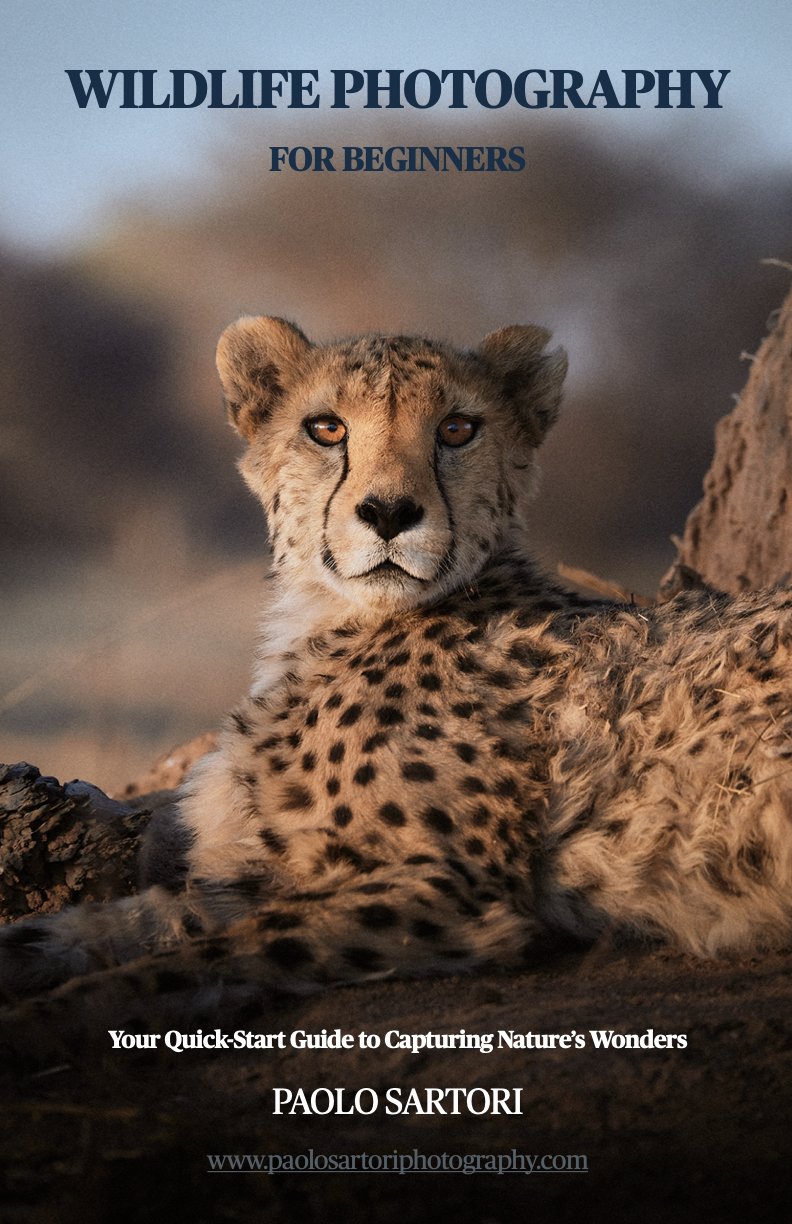I've been photographing wildlife professionally for years now, primarily using cameras like the Canon R5 and Canon R3. After countless hours tweaking settings, customizing buttons, and experimenting in the field, I've discovered something that completely changed my workflow - something I wish I'd known sooner. Today, I'm sharing my new favorite autofocus customization that allows you to use continuous (SERVIO) autofocus and single (ONE-SHOT) autofocus simultaneously—without ever diving into your camera menu while you're out shooting.
If you photograph wildlife, birds, or any fast-moving subjects, this autofocus setup could transform your photography as well.
Understanding Autofocus Modes: Servo AF vs. One-Shot AF
Before we dive into the setup, let's quickly recap the two main autofocus modes that photographers use most frequently:
Continuous Autofocus (Servo AF / AF-C):
In this mode, your camera continuously adjusts the focus to track and keep a moving subject sharp. It's ideal for wildlife, sports, or action scenes where subjects move unpredictably.Single Autofocus (One-Shot AF / AF-S):
Here, your camera locks focus once, and it remains fixed until you refocus manually. It’s excellent for stationary subjects, precise framing, or scenes where you don't want the autofocus to shift unexpectedly.
Why Servo AF Isn’t Always Perfect
Servo AF is powerful, especially with modern mirrorless cameras. However, even the most advanced autofocus tracking systems sometimes struggle, particularly:
In cluttered scenes (branches or leaves in front of your subject).
Low-contrast lighting (foggy mornings or dusk conditions).
When you want to deliberately lock focus on a specific element in the frame and recompose.
In these situations, continuous autofocus can get confused, causing missed shots and frustration in the field.
👉 Quick tip: If you're into wildlife photography and want more field-tested tips, download my free 100-page wildlife photography eBook. It’s packed with gear advice, camera settings, and in-field techniques to elevate your photography.
My Previous Workarounds (and Why They Didn’t Work)
Initially, I separated autofocus from my shutter button, assigning AF activation exclusively to the back AF-ON button. This setup (also known as "back-button focusing") gave me good control but still required frequent switching between SERVO and ONE-SHOT modes depending on the situation.
I tried assigning different buttons - front buttons on the R3, FN buttons on the R5 - to quickly switch modes, but this still meant fiddling with camera settings during critical moments. Inevitably, I would sometimes forget to switch modes back, resulting in out-of-focus shots at the worst possible times.
I needed a solution to have both autofocus modes instantly accessible at any given moment—without diving into camera menus.
The New Autofocus Setup: Servo and One-Shot AF Simultaneously
After experimenting extensively, I've finally found the perfect customization that lets me seamlessly use Servo and One-Shot AF at the same time. Here’s exactly how I set it up on my Canon R5:
Step-by-Step Autofocus Setup (Canon R5)
Go to the Autofocus Menu:
Set AF Operation to SERVO AF.
Set AF Method to Tracking + Subject Recognition.
Choose your subject (Animals, People, Vehicles).
Disable Continuous AF (to conserve battery life and avoid unnecessary AF movement).
2. Customize Your Buttons:
In the "Customize Buttons" menu, set the Shutter Button to trigger both Exposure Metering and AF. This activates continuous autofocus with tracking when half-pressed.
Set the AF-ON button similarly to trigger Exposure Metering and AF, but now press the INFO button to access the sub-menu:
Change AF Operation to ONE SHOT AF.
Change AF Method to SPOT AF (for precise, single-point focusing).
This simple yet powerful setup lets you instantly switch autofocus modes with a single button press:
Half-pressing your shutter button triggers Servo AF with tracking, ideal for action and moving subjects.
Pressing and holding the AF-ON button activates precise One-Shot AF, ideal for stationary or carefully composed scenes.
In the field with the R3
Adjustments for Canon R3 Users:
On the Canon R3, subject tracking is always activated and cannot be completely disabled, so you slightly adapt this setup (which I fully explain in detail in my YouTube video).
SEE FULL VIDEO TUTORIAL
Real-World Benefits of This Autofocus Setup
With this setup, you gain instant access to both autofocus modes in the field. For example:
Tracking a running cheetah? Half-press your shutter button and let Servo AF keep it sharp.
Suddenly spot a perched bird hidden among branches? Instantly press the AF-ON button, lock your focus precisely, and recompose confidently.
One Additional Autofocus Tip for Telephoto Users
If you're using super-telephoto lenses, occasionally the autofocus might jump to a distant background or foreground, losing your subject completely. When this happens, it takes precious seconds for your camera to find your subject again.
The solution: use your lens’s focus preset feature. Many telephoto lenses allow you to set a specific focus distance and instantly recall it with a single twist or button press. This vastly reduces focus-hunting and ensures you never lose critical moments.
I've created a full tutorial dedicated to making the most out of this underrated telephoto function. Don't head out on your next photography adventure without checking that out.
Final Thoughts and Next Steps
By implementing this autofocus setup I drastically improved my hit rate for sharp images - especially in complex, fast-changing wildlife scenarios. Give it a try on your camera and see how it transforms your own shooting experience.
Don’t forget to subscribe to my YouTube channel for more practical wildlife photography insights like this!
Happy shooting!
















